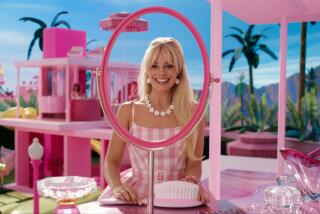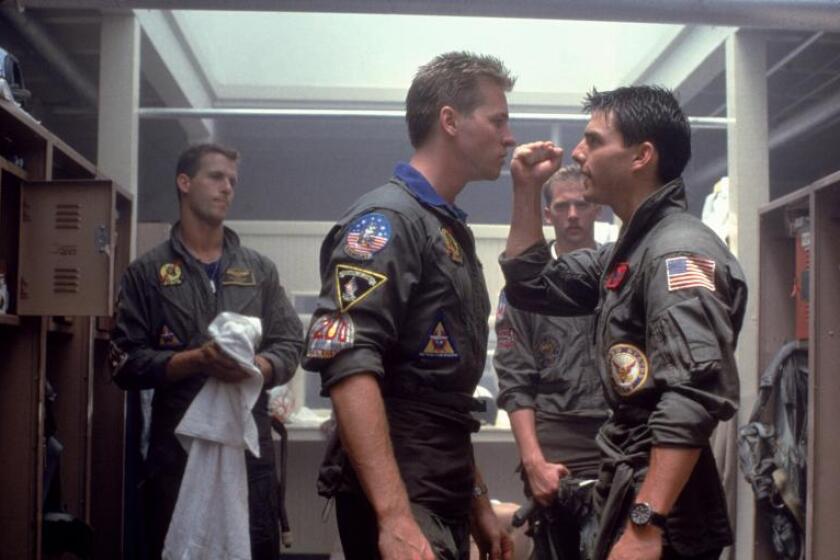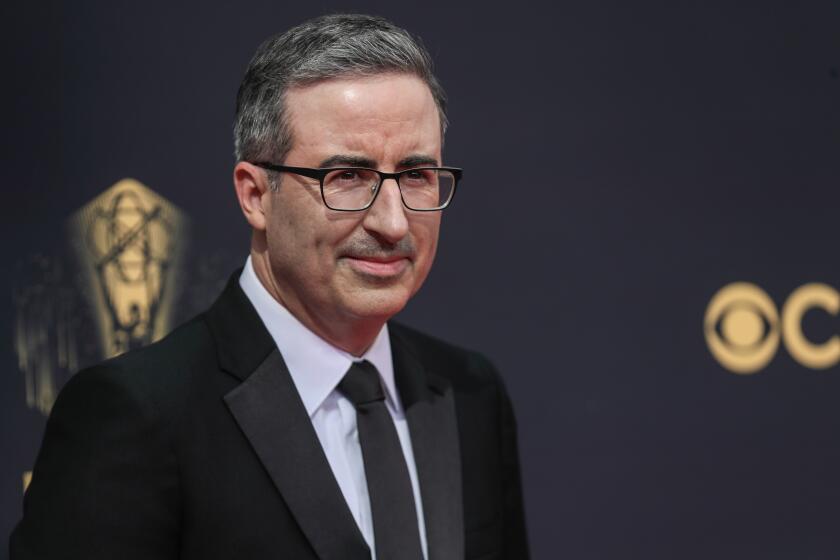For makers of ‘Valentine’s Day,’ going on location means going green
- Share via
The star-studded romantic comedy “Valentine’s Day” is expected to generate plenty of green at the box office this weekend.
But it’s green of a different kind that could set “Valentine’s Day” apart in Hollywood.
The Warner Bros. movie, directed by Garry Marshall and featuring a raft of stars including Julia Roberts, Patrick Dempsey, Anne Hathaway and Jessica Biel, took “green filmmaking” to a new level, according to people involved in the project.
The film -- which follows the interwoven lives of a group of characters coping with romance and heartache over a single Valentine’s Day -- was shot entirely in Los Angeles and features such landmarks as the Beverly Wilshire Hotel, Los Angeles International Airport and University High School.
Most notable, however, were the lengths to which producers went to reduce their carbon footprint through extensive use of solar-powered and biodiesel generators, reusable water bottles, hybrid vehicles and composting of food waste, among other steps. Warner Bros. is even creating a video documenting the practices in the hopes that it will spur green standards for future productions.
“There’s no doubt that, with the exception ofsolarpanels, these practices can be implemented on a majority of our films,” said Jon Romano, sustainable production manager for Warner Bros. Pictures.
Warner Bros. says it’s impractical to expect each of the green practices used on “Valentine’s Day” to apply to all productions, given that solar power isn’t always feasible nor composting available at every location. But, Romano said, “It’s certainly going to be a model.”
Hollywood, of course, has a long way to go before it can tout its environmental record. The industry’s routine use of use carbon-belching private jets to ferry stars, for example, doesn’t comport with a green mandate.
Still, some producers are paying more than lip service to the hype, prompting equipment suppliers, vendors and film crews to change how they operate. Most studios have taken steps to reduce energy costs and some, such as Warner Bros., have hired environmental managers who work with productions to help identify and carry out sustainable practices.
“There has been a dramatic increase over the past five years in terms of film, TV and commercial projects incorporating sustainable practices,” said Lauren Selman, founder of Reel Green Media, a firm that advises filmmakers on green production practices. “A lot of people are sharing information right now. It’s a hot topic.”
Part of what’s driving the change is awareness about the effects of global warming, highlighted in such films as Al Gore’s 2006 Academy Award-winning documentary “An Inconvenient Truth” and sensationalized in such blockbusters as 2004’s “The Day After Tomorrow.”
“It’s not just for PR,” said producer Marshall Herskovitz, president of the Producers Guild of America, which has hosted forums on green production and has been working with studios to develop sustainable standards. “There are a lot of people committed at every level of this industry who feel that the government has not taken the lead it should, and we have to do it ourselves.”
There are also business reasons for jumping on the green bandwagon. Studios and producers can save money by adopting basic habits, such as eliminating plastic water bottles.
In “Valentine’s Day,” producers used 350 reusable water bottles, eliminating 21,000 plastic bottles and reducing carbon dioxide emissions by 67 metric tons, according to a “carbon audit” by Warner Bros.
Other steps included using solar-powered generators at the production camp, saving an estimated 19 metric tons of carbon dioxide.
Rental trucks and set lighting generators were powered by biodiesel fuel. Caterers used biodegradable plates, cups and utensils to serve cast and crew meals during the 55-day shoot. Most of the 25 tons of waste collected through the filming was either composted or recycled.
And stars were supplied with hybrid rental cars to travel to the set. Only one star had to be asked to not show up in a limo, according to the film’s producers, declining to identify the actor.
“We had a pretty hip group of actors,” said Diana Pokorny, the film’s executive producer.
With the exception of solar panels, which proved more costly than conventional generators, the sustainable practices did not add to the cost of the film, executives said. The studio declined to disclose the film’s budget, but sources say it is less than $50 million.
Each department was encouraged to come up with ways to cut waste, such as reducing excess film or composting coffee grounds.
“Warner Bros. really wanted to see our film as changing the culture,” Pokorny added. “We tried to push what we can do and what we can do better next time.”
richard.verrier @latimes.com
More to Read
The biggest entertainment stories
Get our big stories about Hollywood, film, television, music, arts, culture and more right in your inbox as soon as they publish.
You may occasionally receive promotional content from the Los Angeles Times.











